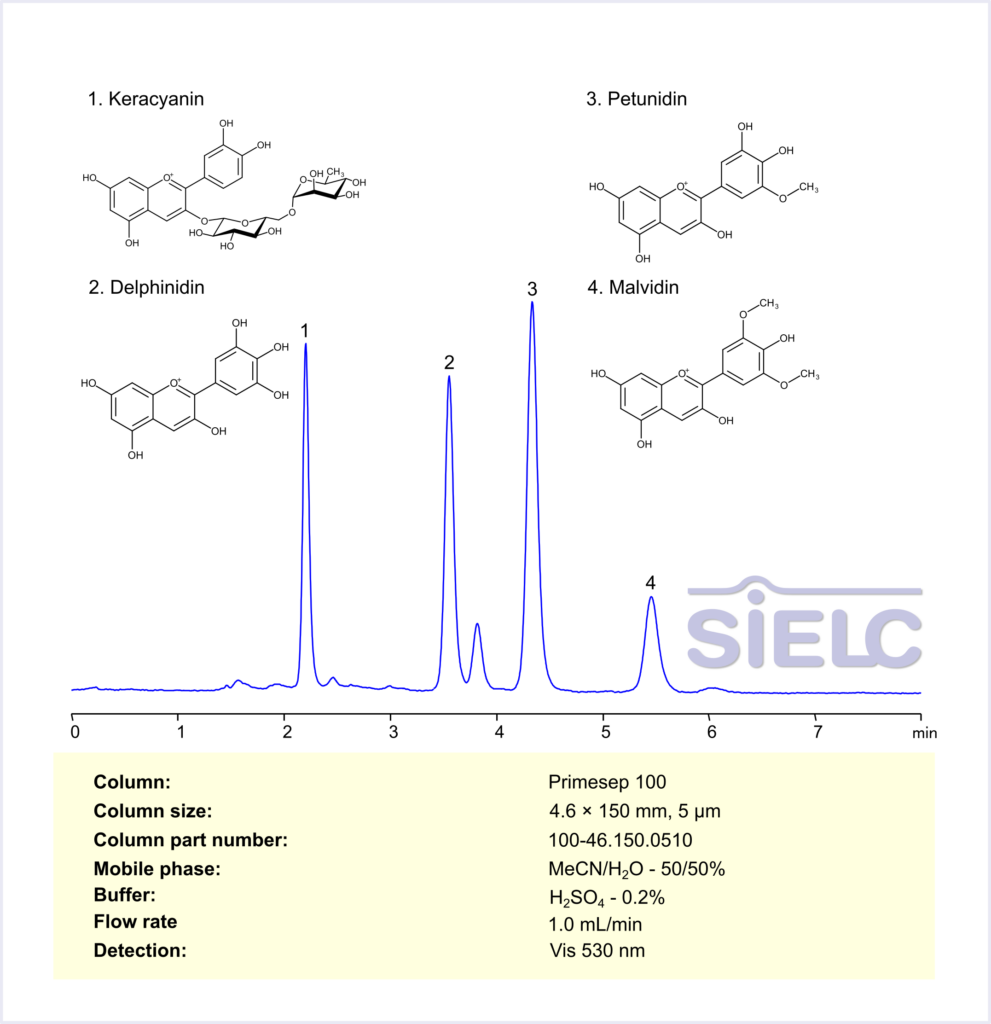High Performance Liquid Chromatography (HPLC) Method for Analysis of Anthocyanins (Keracyanin, Delphinidin, Petunidin, Malvidin) on Primesep 100 by SIELC Technologies
Separation type: Liquid Chromatography Mixed-mode SIELC Technologies
High Performance Liquid Chromatography (HPLC) Method for Analysis of Keracyanin, Delphinidin, Petunidin, Malvidin
Anthocyanins are a class of water-soluble pigments responsible for the red, purple, and blue colors found in many fruits, vegetables, and flowers. They belong to the flavonoid group of phytochemicals and have strong antioxidant properties.
Anthocyanins (Keracyanin, Delphinidin, Petunidin, Malvidin) can be retained, separated and analyzed using a Primesep 100 mixed-mode stationary phase column. The analysis employs an isocratic method with a simple mobile phase comprising water, acetonitrile (MeCN), and sulfuric acid as a buffer. This method allows for detection using Vis 530 nm.
You can find detailed UV-Vis spectra of Keracyanin, Delphinidin, Petunidin, Malvidin and information about its various lambda maxima by visiting the following links: Anthocyanins (Keracyanin, Delphinidin, Petunidin, Malvidin)
| Column | Primesep 100, 4.6 x 150 mm, 5 µm, 100 A, dual ended |
| Mobile Phase | MeCN – 50% |
| Buffer | H2SO4 – 0.2% |
| Flow Rate | 1.0 ml/min |
| Detection | Vis 530 nm |
| Class of Compounds | Anthocyanins |
| Analyzing Compounds | Keracyanin, Delphinidin, Petunidin, Malvidin |
Application Column
Primesep 100
Column Diameter: 4.6 mm
Column Length: 150 mm
Particle Size: 5 µm
Pore Size: 100 A
Column options: dual ended
Keracyanin
Malvidin
Petunidin






